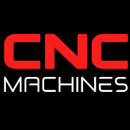Top 5 Common CNC Machining Mistakes and How to Avoid Them

Top 5 Common CNC Machining Mistakes and How to Avoid Them
CNC (Computer Numerical Control) machining is a highly precise and efficient manufacturing process. However, it is not without its challenges. Mistakes in CNC machining can lead to wasted materials, increased production costs, and compromised product quality. Understanding these common pitfalls and implementing strategies to avoid them can significantly enhance productivity and overall performance. Here are the top five common CNC machining mistakes and practical tips for avoiding them.
1. Incorrect Tool Selection
The Mistake
Using the wrong cutting tool for a specific material or application can result in poor machining outcomes, including excessive tool wear, overheating, and substandard surface finishes.
How to Avoid It
- Understand Material Properties: Familiarize yourself with the characteristics of the materials you are machining. Different materials require different tools to achieve optimal results.
- Consult Tooling Guidelines: Refer to manufacturer specifications for recommended tools based on material type and machining operations.
- Maintain an Organized Tool Inventory: Keep an up-to-date inventory of tools and their intended applications readily accessible for quick reference.
2. Poor Machine Setup
The Mistake
Inadequate setup can lead to misalignment, improper fixturing, and inaccuracies in machining, resulting in parts that do not meet specifications.
How to Avoid It
- Follow a Setup Checklist: Create and adhere to a detailed machine setup checklist that includes all necessary adjustments and alignments.
- Use Precision Fixtures: Invest in high-quality fixtures to secure workpieces properly and maintain alignment throughout the machining process.
- Calibrate Regularly: Schedule routine calibration of machines to ensure that they operate within specified tolerances.
3. Inaccurate Tool Path Programming
The Mistake
Errors in G-code programming or CAM software can lead to incorrect tool paths, causing machining errors or even machine crashes.
How to Avoid It
- Double-Check Programs: Always review G-code programs thoroughly before executing them on the CNC machine.
- Utilize Simulation Software: Employ simulation tools to visualize tool paths and identify potential issues before running the program on the machine.
- Engage in Peer Reviews: Encourage team members to review each other's programs for accuracy, which can help catch errors before they become costly mistakes.
4. Ignoring Cutting Parameters
The Mistake
Neglecting to optimize cutting speeds, feed rates, and depth of cut can lead to excessive tool wear, poor surface finishes, and even part damage.
How to Avoid It
- Consult Manufacturer Specifications: Refer to tooling manufacturer guidelines for optimal cutting speeds and feed rates based on the material and tooling used.
- Conduct Test Cuts: Perform initial test cuts to determine the best parameters for specific setups and materials.
- Monitor and Adjust in Real-Time: Implement monitoring systems that provide real-time feedback on machining parameters and performance.
5. Neglecting Maintenance and Cleaning
The Mistake
Failing to perform regular maintenance and cleaning can lead to machine malfunctions, reduced accuracy, and compromised part quality.
How to Avoid It
- Establish a Maintenance Schedule: Create a routine maintenance schedule for machines, including lubrication, cleaning, and inspection of critical components.
- Train Staff on Cleaning Protocols: Ensure that operators are trained in proper cleaning and maintenance procedures to prevent buildup and contamination.
- Monitor Machine Performance: Keep track of machine performance metrics to identify and address maintenance needs proactively.
Conclusion
By being aware of these common CNC machining mistakes and implementing effective strategies to avoid them, manufacturers can significantly enhance productivity and quality in their operations. Proper tool selection, meticulous machine setup, accurate programming, optimized cutting parameters, and regular maintenance are key factors in preventing costly errors.
Continuous improvement in CNC machining practices will not only lead to superior product quality but also foster a culture of excellence and efficiency in the manufacturing environment. By prioritizing these practices, CNC machining operations can remain competitive and successful in today’s dynamic market.


